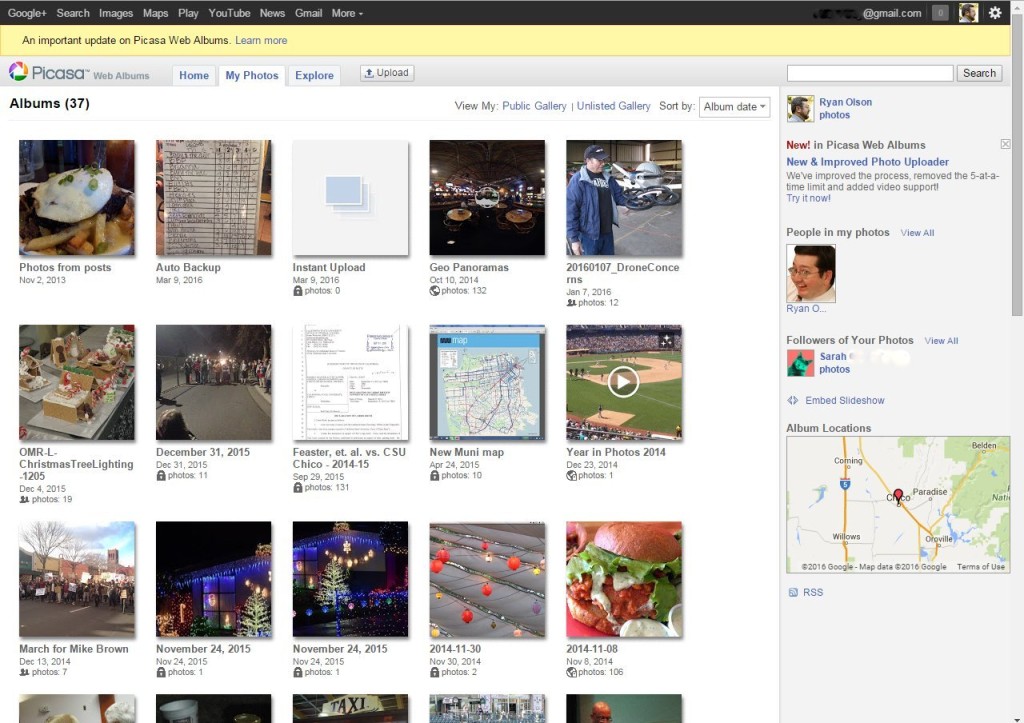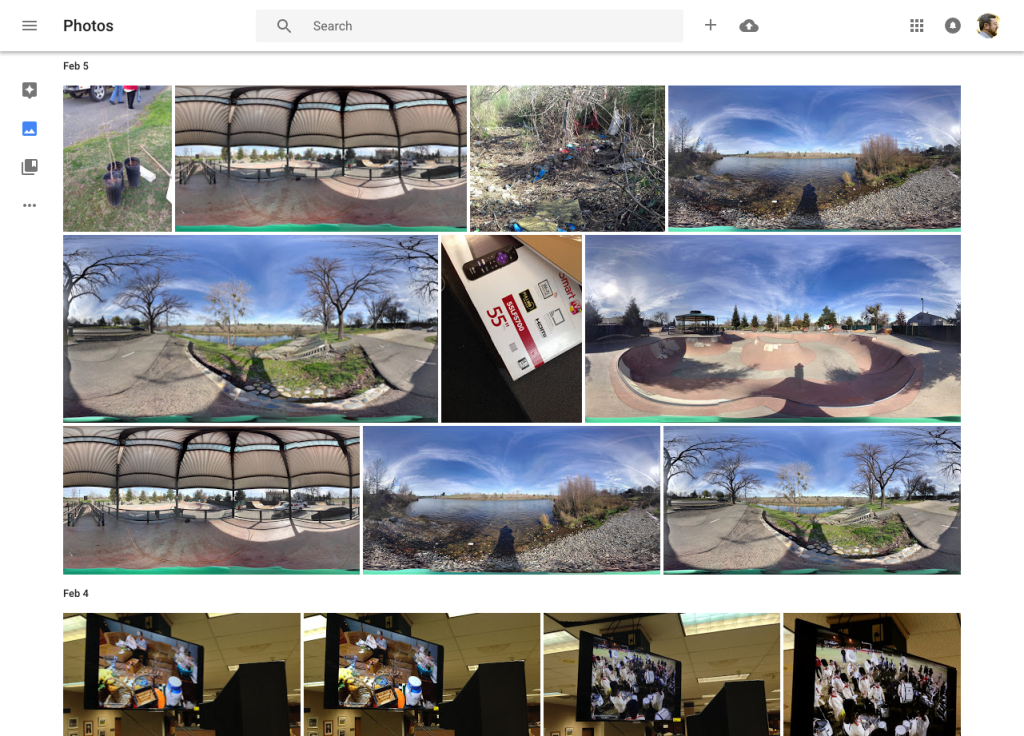
A screen capture showing Google’s Picasa desktop software running on a Windows 7 computer on Thursday, March 10, 2016.
After years of languishing behind projects like Google+ and Google Photos, Picasa is finally going to the great software and Web service cemetery beyond the clouds. Google announced last month that Picasa was being retired, and the end begins March 15 when the company stops support of the Picasa desktop app. Picasa’s online Web albums will be changing starting May 1.
I’m writing today so people may have the chance to download the Picasa’s free software for Windows and Mac before it’s taken offline. Although I started with Picasa’s Web service, the desktop software has become an invaluable way to quickly sort images and do some basic editing (although the editing tools are closer to Instagram than Photoshop). Although Google is seeking a single service that works on mobile and desktop, that solution isn’t ready today.
At first glance, Picasa is a tough sell as it was first developed when software companies were determining how to bridge software that resided on local computers with cloud services. Picasa was both a desktop app (that Google initially acquired) and an online photo service and it could be hard to explain the difference between the two to others. The two services even had different Web addresses — the app was available at picasa.google.com while the Web service was available at picasaweb.google.com.
A screenshot shows the desktop software at the top of this blog post. Readers may contrast that with a view of the Web albums below.
Compared with modern applications and Web services, both versions of Picasa look a bit dated but they were still generally effective.
When it came to sharing photos online, Picasa Web Albums made things simple without the clutter of other photo-sharing services, like PhotoBucket. You could embed individual Picasa images on other sites or share slideshows of entire albums. These features are not currently available in Google Photos.
The biggest advantage of Google Photos is that it can store all of your photos at a usable size (Google+ Photos had a pretty small image size limit). I’ve found it extremely convenient for locating and sharing individual photos, but I’m less inclined to share whole albums. To be fair, I didn’t choose to share many albums with Picasa Web Albums, but I miss the ability to view other’s public photo profiles and share my own.
Ultimately, I’ll likely miss the desktop software most of all, especially when it came to processing screenshots. As someone whose personal computer is a MacBook, it’s easy to take cropped screenshots with the Command-Shift-4 keyboard shortcut. On a Windows PC, it’s initially easy to take the screenshot with the PrtScn key, but then you have to go to an image app like MS Paint, paste the screenshot into the image, crop it and then save it.
Picasa for Windows allowed users to skip a couple of steps. When Picasa was running, the PrtScn key captured the desktop directly to Picasa (alas, no secondary screens). With the image already saved, it was easy to go into Picasa, edit and crop the image and export it from a bitmap to a JPEG or PNG file.
The rest of the desktop app’s tools were straightforward. You couldn’t cut out or easily modify smaller elements of an image (something that had me running to Photoshop a couple times last year). The tools were useful for basic photo editing and caption information was saved in an IPTC format, which saved a lot of time for work. Users could also add text to an image, which saved me a lot of grief when I was working on my Christmas cards.
As much as I liked the desktop software, it could get a bit difficult to manage images, especially as it tried to cope with updates from other developers. For example, it was great that Picasa was able to read Apple’s iPhotos image database, but that advantage is practically wiped out when the image database splits up images by date (instead of albums or something more useful).
Ultimately, it makes sense for Google to let go of Picasa as the desktop app was last significantly updated more than four years ago. It will also reduce some of the confusion of Google’s image programs (which will still include Google Photos and the Snapseed mobile editing apps). I hope Google Photos will pick up some of the features of the Picasa services. Google Photos offers some incredible advantages, especially with facial and object recognition, but I think it has some ways to go before it can be a suitable replacement for Picasa.


